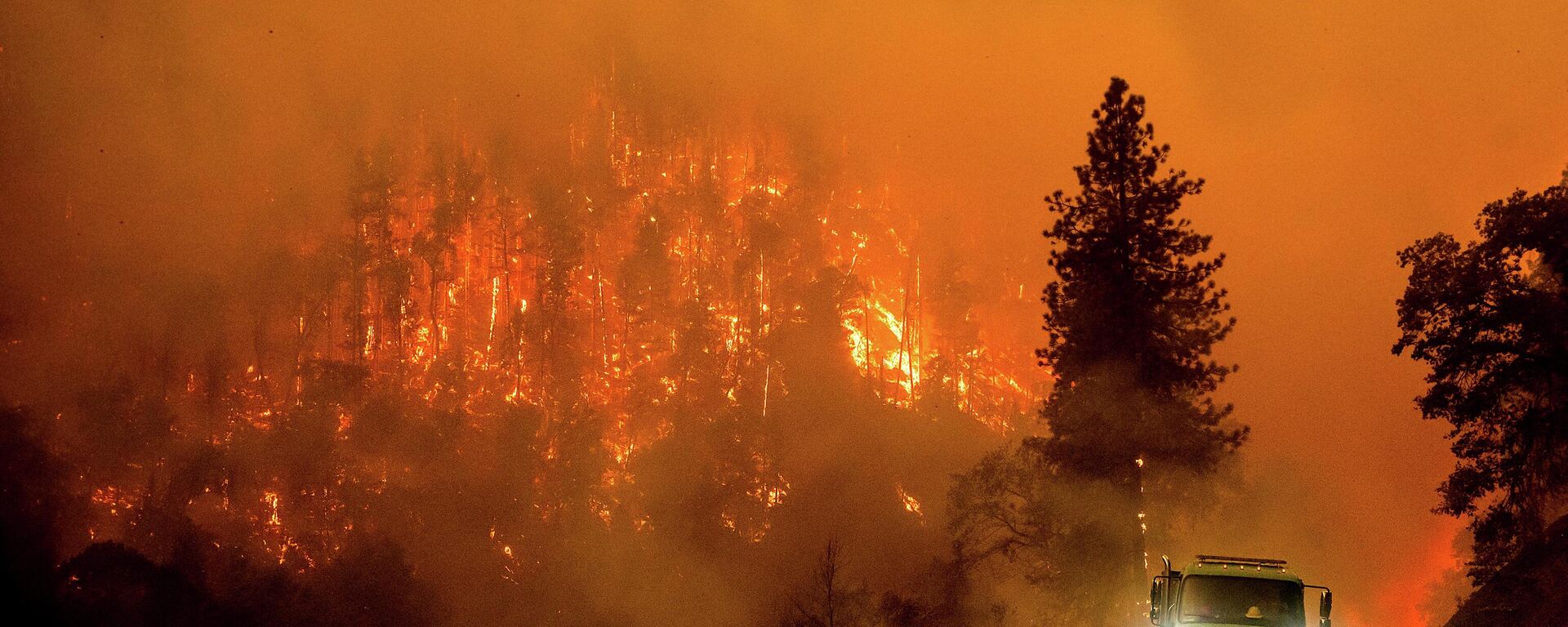Don't Want That Smoke: Canadian Wildfires Darken Skies, Prompt Air Alerts Across US East

© AP Photo / Patrick Sison
Subscribe
There are currently 421 active fires in Canada - including 27 that ignited on Tuesday, according to the Canadian Interagency Forest Fire Centre. More than 9.63 million acres have burned in Canada this year, an area larger than New Jersey and Connecticut combined.
Smoke from the Canadian wildfires has spread across much of the eastern half of the United States, affecting air quality in major metro areas along the northern half of the eastern seaboard and most of the Northeast.
Social media users have been posting pictures of the skies in New York and elsewhere, showing a dystopian scene that climate scientists say will become more frequent in the coming years due to climate change.
Latest snapshot of Midtown Manhattan via @Earthcam as dense wildfire smoke settles in. An absolutely surreal scene. pic.twitter.com/PG8uP53g34
— John Homenuk (@jhomenuk) June 6, 2023
Those aren’t clouds. That’s smoke. pic.twitter.com/GqnZry9Kc8
— Brendan Kuty 🧟♂️ (@BrendanKutyNJ) June 6, 2023
WASHINGTON, D.C. – Everything is on fire pic.twitter.com/E1pBoAJ0RP
— Andrew Solender (@AndrewSolender) June 6, 2023
Maybe the worst air quality New York City has seen in a long time as a smokey haze shrouds the sun as it rises behind midtown Manhattan and the Empire State Building, Tuesday #newyorkcity #nyc #newyork #haze @EmpireStateBldg @agreatbigcity #sunrise pic.twitter.com/e1Aw5XIFxB
— Gary Hershorn (@GaryHershorn) June 6, 2023
Air quality alerts have been issued for multiple cities, including Baltimore, Maryland, Boston, Massachusetts and Burlington, Vermont.
But those aren’t the only areas affected, with smoke significantly damaging the air quality in cities as far away as Minneapolis, Minnesota, and Washington, DC.
But the worst air quality stretched from western New York to Quebec and Ontario. Those areas had “code-orange” and “code-purple” alerts, indicating the air quality was hazardous for the general population and not just vulnerable individuals.
The air quality is expected to get worse on Wednesday, with an even larger smoke cloud expected to move south from Canada on the tail of a cold front. Things could improve over the weekend with the wind expected to move in a northwesterly direction on Friday; however, that relief is dependent on local fires not breaking out.
There are dry conditions in the Great Lakes, Northeast and Mid-Atlantic regions, increasing the risk of local fires which could exacerbate the problem. Dry thunderstorms, which do not carry much rain, are expected in Pennsylvania and New Jersey, greatly increasing that risk.
Wildfires are not uncommon in Canada during the summer, but they typically begin July or later. 2023 has already far surpassed the average amount burned in a year, 5.18 million acres, and summer has not yet officially begun.


